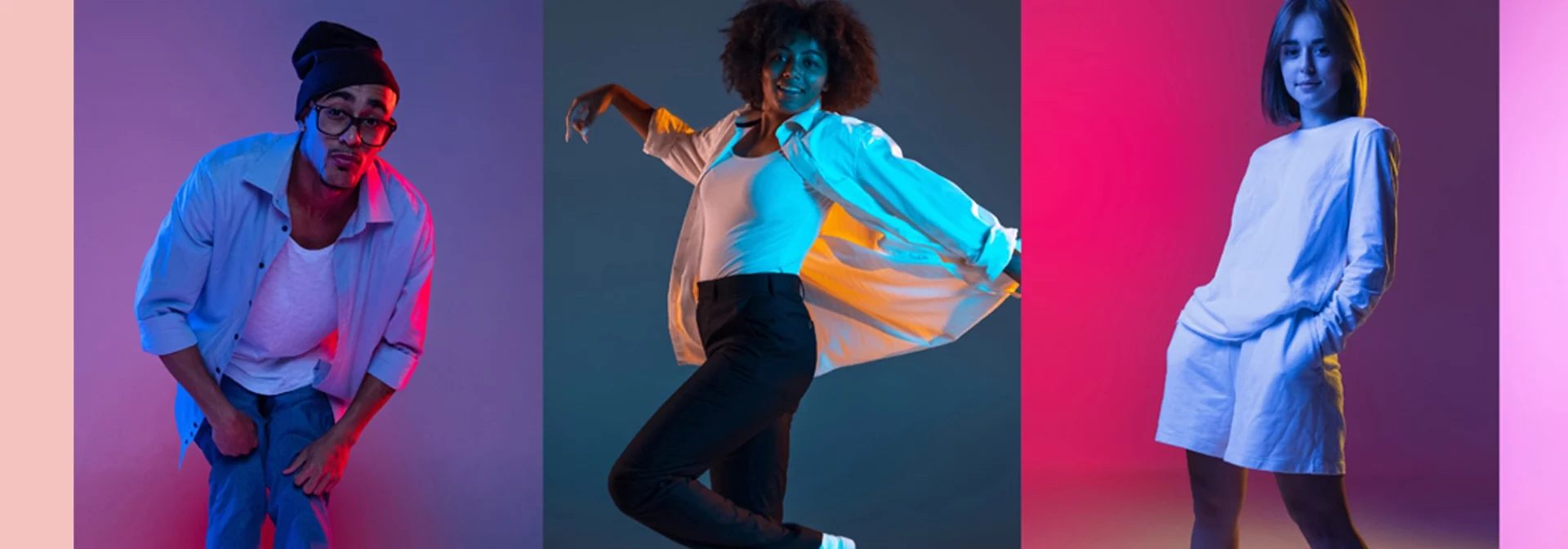A guide to understanding gender, gender identity, and sex.
Author Jen Bell | Reviewed by Mason Dunn
Identity is a journey, and for many teens, it can be a challenging one. But in a world where being true to oneself is more important than ever, discovering and expressing your identity is crucial to living a fulfilling life.
Which means that gender identity is a big part of self-expression and it’s an essential piece in how we navigate relationships, personal experiences, and emotional growth. Gender is an idea created by people, culture, and society to help categorize and explain the world around us. The two genders that most people know are boy and girl (or man and woman).
Essentially, gender identity is the personal sense an individual has over their own gender. At birth, most of us are assigned a sex based on how our bodies look, and that sex corresponds with a gender that society assumes for us. However, this assumption doesn’t always match how we feel inside.
In this guide, we’ll illuminate gender identity and how it’s not only limited to two possibilities (in fact, it’s an entire spectrum of expression). Keep scrolling and learn insights, tips for talking to your teen, and even how to better understand yourself.
There Have Always Been More Than Two Genders
Since ancient times, there is evidence from around the world of many more genders than “man” and “woman.” For example, the Pueblo of Zuni have lived in the area of New Mexico for the last 3000-4000 years.
In Zuni culture, there are women, men, and a third gender called lhamana. Lhamana wear masculine and feminine clothing and move between the rights and responsibilities of males and females. They act as an important bridge and balance in Zuni society. Some lhamana take part in the North American two-spirit community. Some other gender expansive identities include the burrnesha, hijra, waria, and more.
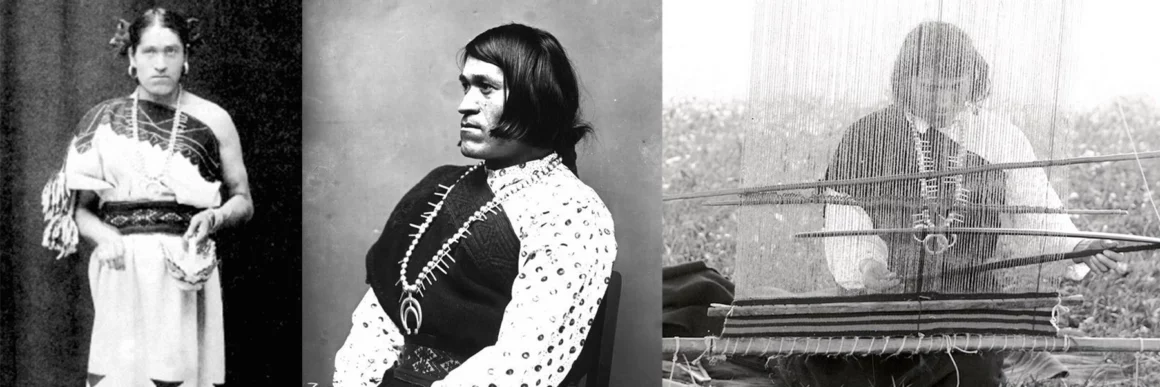
We’wha, a Zuni Native American from New Mexico (pictured above), was a famous lhamana weaver, potter, hunter, and spiritual leader.
Gender Identity & Gender Expression
Gender Identities
- Feminine Genders: Demigirl, Femme, Girl or Woman
- Third Genders: Two-Spirit Fa’afafine, Fakafefine, Lhamana, Māhū, Muxe, Two-Spirit, Yan Daudu Note: These terms are cultural and should not be appropriated or used by people outside of these cultures.
- Nonbinary Genders: Agender, Bigender, Futch, Genderfluid, Genderqueer, Neuroqueer, Neutrois, Nonbinary or Enby, Multigender, Pangender, Stem or Stemme
- Masculine Genders: AG or Aggressive, Boy or Man, Butch, Demiboy, Stud
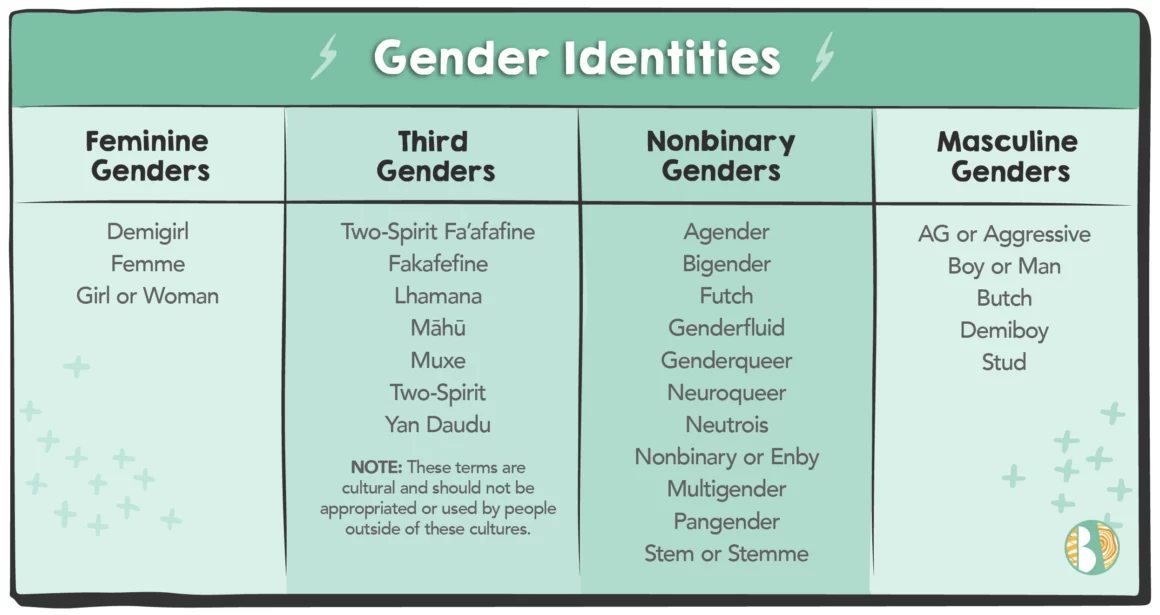
Gender Identity vs. Gender Expression vs. Biological Sex
Gender identity and gender expression are linked to identity and expression, but they are not the same thing.
A person’s gender identity is their internal sense of who they are and which gender they identify with. We all have a gender identity, whether that is woman, man, or any other gender. Gender identity is separate from sex, which refers to the biological features — like genitals or chromosomes — in the human body. For some folks, their gender identity and biological sex may be the same, and for others, it may be different.
Our gender expression is how we present our gender to the world, including things like clothes, hairstyle, name, and pronouns.
Gender expression is independent from a person’s gender identity. Just as cisgender girls can wear pants, transgender boys can wear dresses. While being nonbinary does not mean someone has to dress in a gender-neutral style.
A person’s gender identity and the way they express it can shift over the course of their lives, or even moment to moment.
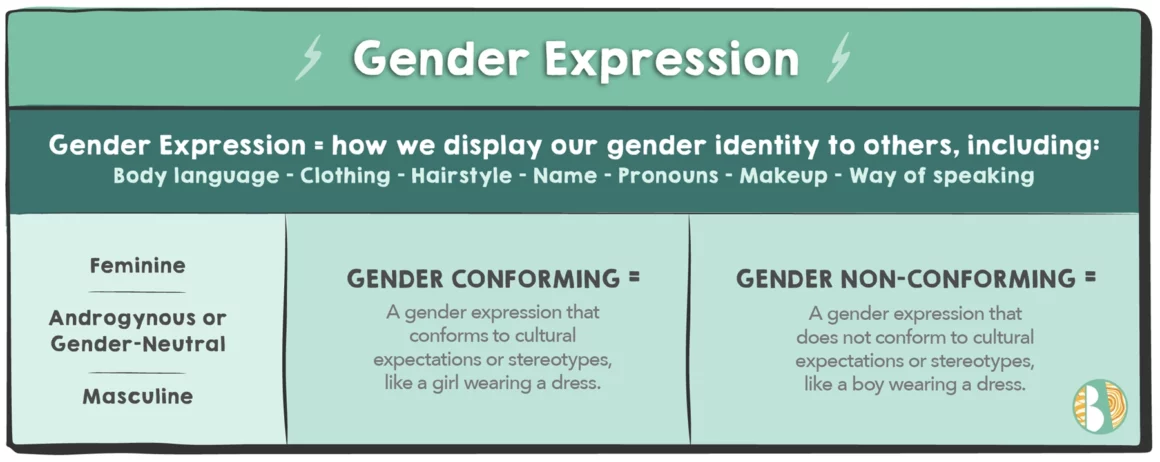
Gender Expression
Gender Expression is how we display our gender identity to others, including: body language, clothing, hairstyle, name, pronouns, makeup, and way of speaking.
Types of gender expressions include feminine, androgynous or gender-neutral, masculine.
If a person is gender conforming, that means they display a gender expression that conforms to cultural expectations or stereotypes, like a girl wearing a dress.
If a person is gender non-conforming, that means they display a gender expression that does not conform to cultural expectations or stereotypes, like a boy wearing a dress.
Cisgender & Transgender
At birth, most of us are assigned a sex based on how our bodies look, and that sex corresponds with a gender that society assumes for us. However, this assumption doesn’t always match how we feel or identify with on the inside.
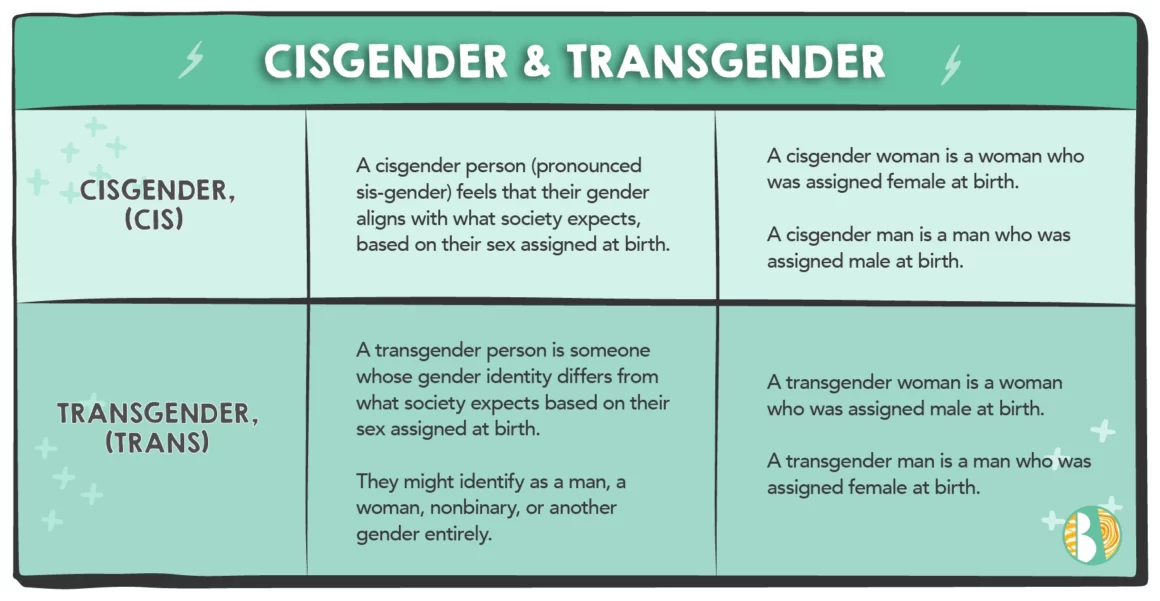
Cisgender people feel comfortable with the gender corresponding with their sex assigned at birth.
Transgender people may be assigned a gender that does not match who they are. GLAAD estimates that 3% of the U.S. population identify as transgender, that’s almost 10 million people!
Do People Choose to Be Trans?
No. Each person’s gender identity is part of who they are, just like eye color and height. People cannot choose to be transgender, no more than they can choose what eye color they’re born with. Think of the people you know whose internal sense of their gender matches their physical appearance. Did they “choose” to be that way?
Here are just a few of the trans and nonbinary celebrities you might know: Demi Lovato, Miley Cyrus, Jonathan Van Ness, Laverne Cox, Indya Moore, Carmen Carerra, Jazz Jennings, Sam Smith, Caitlyn Jenner, Kim Petras, Juliana Huxtable, Chaz Bono, Janet Mock, Cara Delevingne, Angel Haze, Amandla Stenberg, and Alok Vaid-Menon.
Ways to Educate Yourself on Gender
Many adults find that taking the time to assess their own beliefs about gender helps them to be more open and understanding with the children and teens in their lives. We recommend these tools:
My Gender Journey
Gender Spectrum has created My Gender Journey, an online exercise to help parents, caregivers, and professionals to reflect on the ways that gender expectations have influenced our relationships, education, career, and other aspects of our lives.
- My Gender Journey – for Parents and Adult Family Members
- My Gender Journey – for Professionals who work with children or families
My New Gender Workbook by Kate Bornstein
My New Gender Workbook is a fun and provocative book that examines gender in light of issues like race, class, sexuality, and language, and offers quizzes, puzzles, and exercises to help the reader challenge and question their own ideas and assumptions about gender.
As we discussed, gender identity is based on a person’s inner relationship to their feelings and expression. Pronouns, clothing, hairstyle, body language, and voice are some of the ways in which we can express gender identity.
So go ahead, explore, and express yourself. However you find your identity — through fashion, hair, pronouns, or any other means, remember that there’s no right or wrong way to be you. Embrace your unique qualities and let your true self shine.
